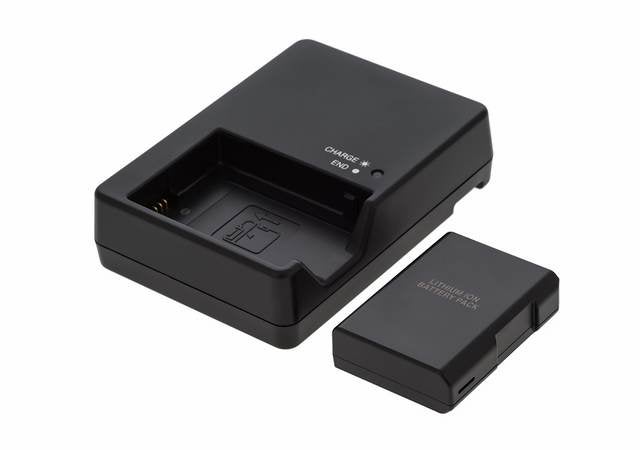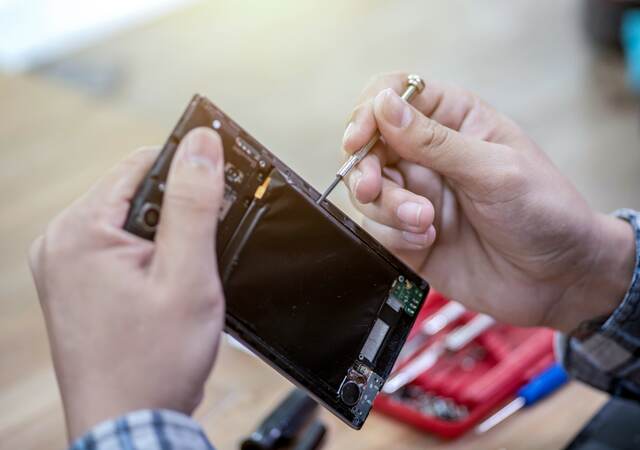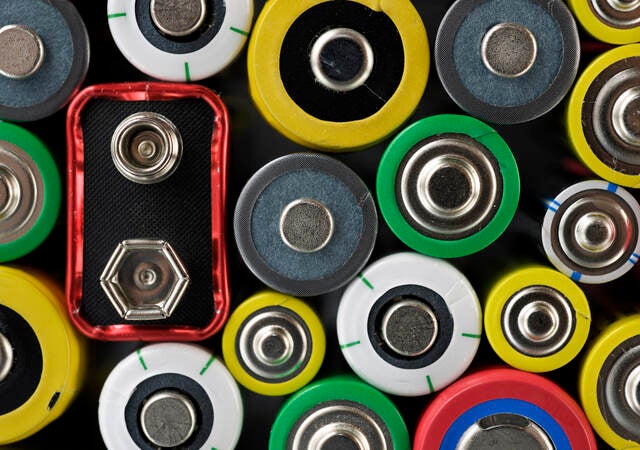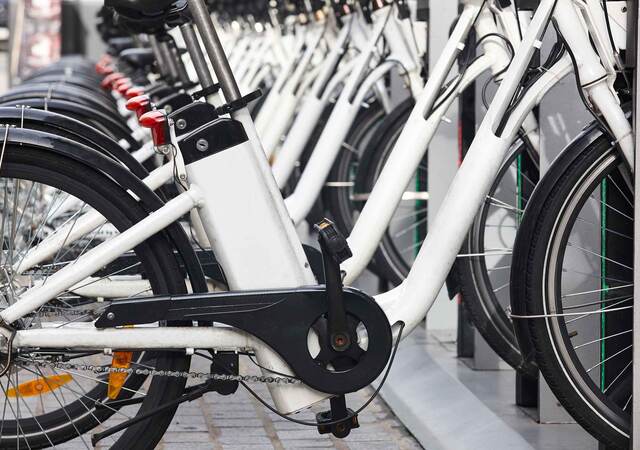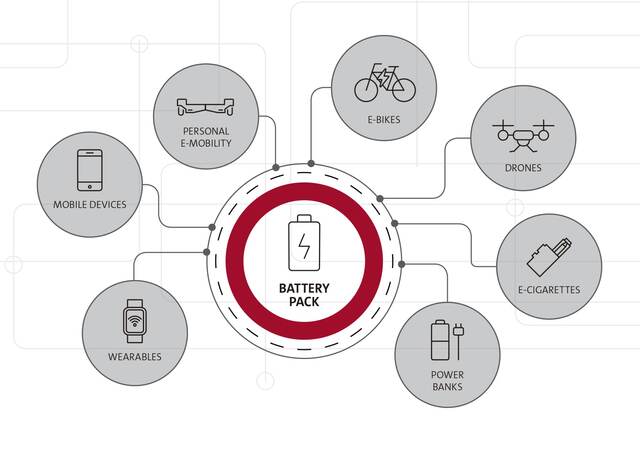EU Battery Regulation approved
A new EU battery regulation, Regulation 2023/1542, was recently approved, and it will not only replace Battery Directive 2006/66/EC but also introduce requirements in many new areas of sustainability and safety of batteries and battery-operated products.
The new regulation contains multiple articles that will come into force with different timelines, affecting the battery supply chain. Key sustainability areas covered include:
Design requirements
- Restriction of substances
- Carbon footprint
- Recycled content
- Performance and durability
- Removability and replaceability
- Safety – Only for stationary battery energy storage systems (SBESS)
Information and traceability
- Labelling and CE marking
- Information via QR code
- Digital battery passport
End of life
- Extended responsibility obligations for producers/producer responsibility organizations (PROs)
- Collection of waste from portable and light means of transport (LMT) batteries
- Recycling efficiency targets
- Material recovery targets
- Shipment of waste batteries outside the EU
- Reporting obligations
Due diligence
- Due diligence policy
- Management system
- Risk management plan
- Third-party verification
- Disclosure of information
What has changed?
The new battery regulation introduces some major changes compared to the existing Battery Directive, which include:
- Article 1 – Amended battery categories: portable, industrial, automotive, electric vehicle (EV), LMT
- Article 3 – Definitions, e.g., producer: economic operator, portable batteries (< 5 kg and neither industrial nor automotive/EVs)
- Article 6 – Hazardous substances
- Article 7 – Carbon footprint
- Article 8 – Recycled content — declaration and targets
- Article 9/10 – Performance and durability
- Article 11 – Design for removability and replaceability
- Article 12 – Safety testing (only for SBESS)
- Article 14 – Second life — access to battery management system (BMS) info, waste classification impact
- Chapter VII Due Diligence
- Article 59/61 – Higher collection target for portable batteries and maintenance of no-loss collection mechanisms for industrial, automotive and EV
- Article 71 – Recycling efficiencies and recovery rates (Annex Xll)
- Article 74/14/77 – Information and labeling: battery passport, labeling (chemistry, lifetime, charging capacity, collection, hazardous substances (HS), safety risks), electronic database, second life data sets
What’s new?
Applicability of the battery regulation depends on battery type. Here are the definitions of battery types introduced:
- “Portable battery” refers to any battery that is sealed, weighs less than 5 kg, is not designed specifically for industrial use, and is not a starter, lighter, igniter (SLI) or LMT. A portable battery for general use is a primary or secondary portable battery specifically designed to be interoperable and within common formats: 3R12, button cell, D, C, AA, AAA, AAAA, A23 and PP3.
- SLI battery – Battery designed to supply electric power for starting, lighting or ignition; could also be used for auxiliary or backup purposes in vehicles, other means of transport or machinery.
- LMT battery – Battery that is sealed and weighs less than or equal to 25 kg and is designed to provide electric power for traction for wheeled vehicles powered by an electric motor or combination of motor and human power, including vehicles of category L in the meaning of Regulation (EU) No. 168/2013; does not include EV batteries.
- EV battery – Specifically designed to provide electric power for traction for hybrid or electric vehicles of Category L in the meaning of Regulation (EU) No. 168/2013 with a weight greater than 25 kg; can also refer to a battery designed to provide electric power for traction of hybrid and electric vehicles of M, N or O categories in the meaning of Regulation (EU) No. 2018/858.
- Industrial battery – Designed specifically for industrial purposes or intended for industrial uses after repurposing, or any other battery with a weight greater than 5 kg that is not an LMT, EV or SLI battery.
- SBESS – Rechargeable industrial battery with internal storage specifically designed to store and deliver energy from and into the grid to end users.
Applicability of selected articles for different battery categories:
| Carbon Footprint – Art. 7 | Restriction of Substances (Cd/Hg/Pb) – Art. 6 | Recycled content (Co/Pb/Li/Ni) – Art. 8 | Replacability and Repairability – Art. 11 | Performance and Durability – Art. 9 & 10 | Safety requirements – Art. 12 | Labeling, marking and information requirements – Art. 17, 74, 77 | Info on state of health and expected lifetime of batteries with BMS – Art. 14 & 76 | |
|---|---|---|---|---|---|---|---|---|
| Portable | +/+/+ | - | + | + (only for general use batteries) | - | + | - | |
| LMT | + | -/+/- | + | + | + | - | + | + |
| SLI | -/+/- | + | - | - | - | + | - | |
| EV | + | -/+/- | + | - | + | - | + | + |
| Industrial <2kWh | -/+/- | - | - | - | + (only stationary battery energy storage system (SBESS)) | + | + (only stationary battery energy storage system (SBESS)) | |
| Industrial >2kWh | + (non-rechargeable excluded) | -/+/- | + (flow batteries excluded) | - | + (non-rechargeable excluded) | + (only stationary battery energy storage system (SBESS)) | + | + (only stationary battery energy storage system (SBESS)) |
| + - applicable | ||||||||
| - - not applicable |
Starting Aug. 18, 2024, manufacturers shall affix the CE marking before placing the battery on the market or putting it into service. The manufacturer shall affix the CE marking to each individual battery that meets the applicable requirements or, where that is not possible or not warranted due to the nature of the battery, to the packaging and the documents accompanying the battery.
Where needed per Annex VIII, this marking is granted by a notified certification body and indicates that the product complies with EU safety, health and environmental protection requirements. Specifically, notified body involvement is required for Articles 7 and 8 for LMT, EV, SLI and industrial batteries with a capacity greater than 2 kWh.
The CE marking must be affixed to the battery before its placement on the market and must be visible, legible and indelible (if impracticable, it can be placed on the packaging and accompanying documents, just like the QR code).
In addition, the CE marking must include the identification number of the certifying body and, where necessary, be accompanied by hazard pictograms or other hazard markings related to battery use, storage, transport and treatment.
From Feb. 18, 2027, LMT, EV and industrial (greater than 2 kWh) batteries placed on the market in the European Union will be required to be electronically registered. This will be in the form of a battery passport carrying an identification QR code and CE marking.
The battery passport will include information specific to the batteries placed on the market and their sustainability requirements. It will provide up-to-date data on the battery’s handling instructions and state of health to recycling operators and those repurposing batteries for a second life.
The battery passport will be required to store the following information:
- Information accessible to the general public in accordance with Point 1 of Annex Xlll
- Information accessible only to notified bodies, market surveillance authorities and the European Commission (EC) in accordance with Points 2 and 3 of Annex XIII
- Information accessible only to any natural or legal person with a legitimate interest in accessing and processing that information for the purposes referred to in Points (a) and (b) of the third subparagraph in accordance with Points 2 and 4 of Annex XIII
| Here is a schedule of implementation of selected published articles and expected secondary legislation: | |
|---|---|
| 2023 |
|
| 2024 |
|
| 2025 |
|
| 2026 |
|
| 2027 |
|
| 2028 |
|
Secondary legislation
For many articles and chapters, the battery regulation directs the EC to prepare delegated acts, guidance or clarifications. Secondary legislation is expected for carbon footprint calculation methodologies, recycling efficiency and material recovery calculation methodologies, removability, replaceability and many more. Battery supply chain stakeholders require these secondary acts as they need more clarity to fulfill regulation requirements.
How can UL Solutions help?
We evaluate, test and certify virtually every type of battery available — including lithium-ion battery cells and packs, chargers and adapters — to UL Standards as well as key international, national and regional regulations for safety, performance, reliability and sustainability.
At UL Solutions, we’re constantly looking at how technology will impact safety and sustainability so we can stay on pace with market developments and work closely with consumer advocacy, trade associations and user groups to shape standards designed to identify and help mitigate risk.
We offer a comprehensive battery safety program for manufacturers that can help reduce the likelihood of safety issues:
- Recognized expertise – UL Solutions brings more than 40 years of experience in battery evaluation and testing. By demonstrating compliance with applicable standards, thousands of products have earned UL certification, a key driver of brand reputation and public trust.
- Supplier selection – Success often rests on the caliber of the partners involved in a project. The UL Prospector® and UL Product iQ® databases help manufacturers identify suppliers that fit their needs by property, application, safety data, performance characteristics and more.
- Systems approach to safety – We take a systems approach to safety and analyze ancillary products that consumers depend on, such as replacement batteries and chargers.
- Failure analyses and audits – Some of the most impactful information about product safety comes from pushing products to the limit and identifying areas of vulnerability using methods such as simulation, physical testing and fault tree analysis.
- Continual education – We offer self-paced training to research and development, compliance, factory, assembly, maintenance, transportation and shipment workers across the entire Li-ion battery value chain, as well as informative webinars that help navigate the regulatory landscape.
About the author:
Jakub Kącki has been with UL Solutions for 17 years. He works as a technology manager for the consumer technology industry. He works from the UL Poland Battery Center of Excellence, supporting Europe and global matters related to driving the advancement of the industry, including batteries, information technology equipment, consumer electronics products, micromobility and other related equipment.
Get connected with our sales team
Thanks for your interest in our products and services. Let's collect some information so we can connect you with the right person.


